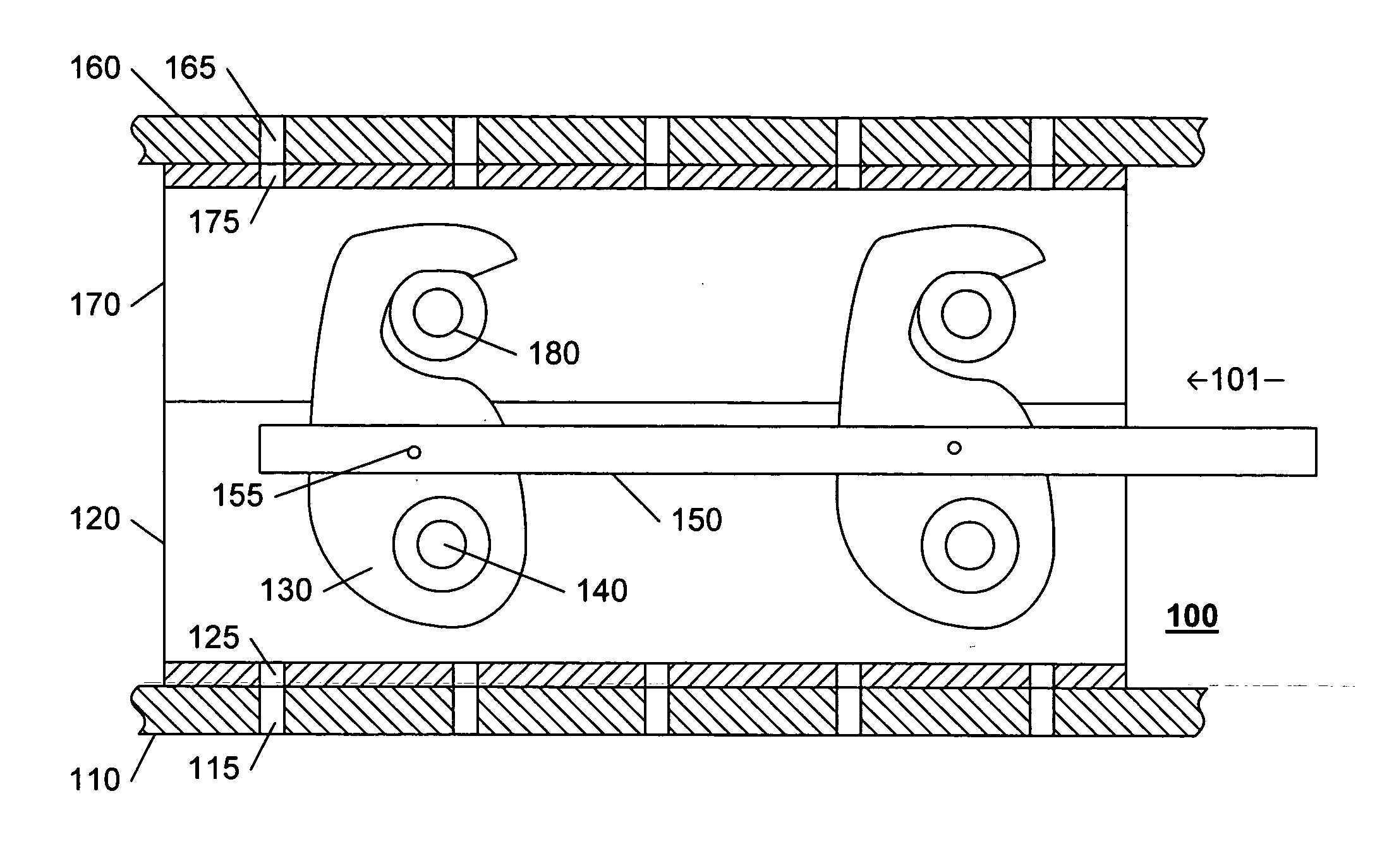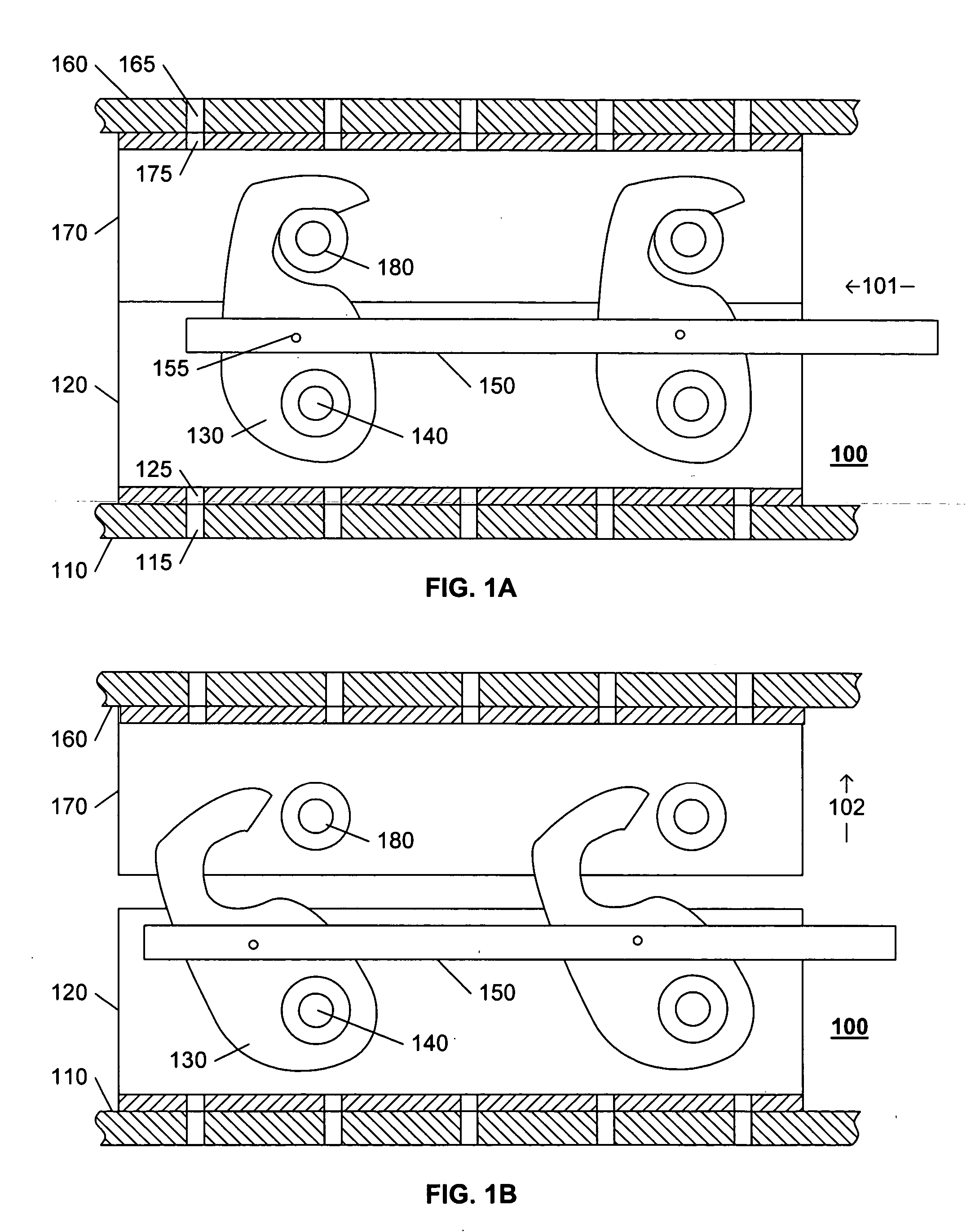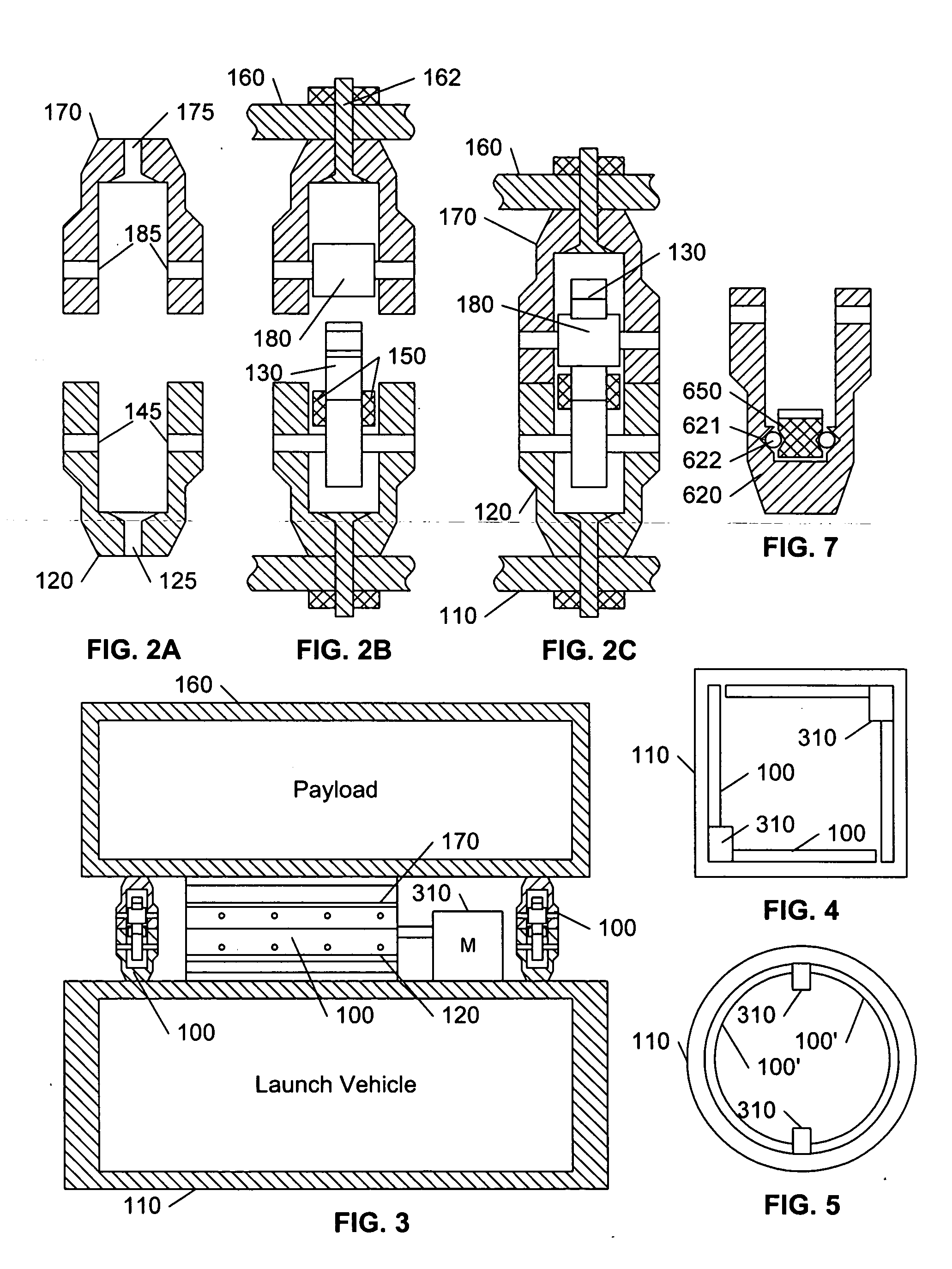Latching separation system
a separation system and latching technology, applied in the field of mechanical connectors, can solve the problems of limiting the amount of testing that can be applied to the components affecting the reliability of the components, and preventing the testing of the joints that are actually flown, so as to reduce the force required
- Summary
- Abstract
- Description
- Claims
- Application Information
AI Technical Summary
Benefits of technology
Problems solved by technology
Method used
Image
Examples
Embodiment Construction
[0022] The invention is presented herein using the paradigm of a spacecraft separation system, because some of the features and benefits of this invention are particularly well suited for coupling, and decoupling, spacecraft. One of ordinary skill in the art will recognize, however, that the disclosed coupling system is not limited to spacecraft applications. Of particular note, this invention is well suited for coupling large structures or large components. In space applications, the coupling system of this invention can be used to facilitate the coupling of the components of space stations, or components of habitats that must provide sealed environments on other planets or moons. In terrestrial applications, the coupling system of this invention can facilitate the joining of pipes in difficult environments, such as the artic or open-water oil platforms; similarly, the building of habitats in these environments can be facilitated by coupling preformed structures. Other applications...
PUM
 Login to View More
Login to View More Abstract
Description
Claims
Application Information
 Login to View More
Login to View More - R&D
- Intellectual Property
- Life Sciences
- Materials
- Tech Scout
- Unparalleled Data Quality
- Higher Quality Content
- 60% Fewer Hallucinations
Browse by: Latest US Patents, China's latest patents, Technical Efficacy Thesaurus, Application Domain, Technology Topic, Popular Technical Reports.
© 2025 PatSnap. All rights reserved.Legal|Privacy policy|Modern Slavery Act Transparency Statement|Sitemap|About US| Contact US: help@patsnap.com



